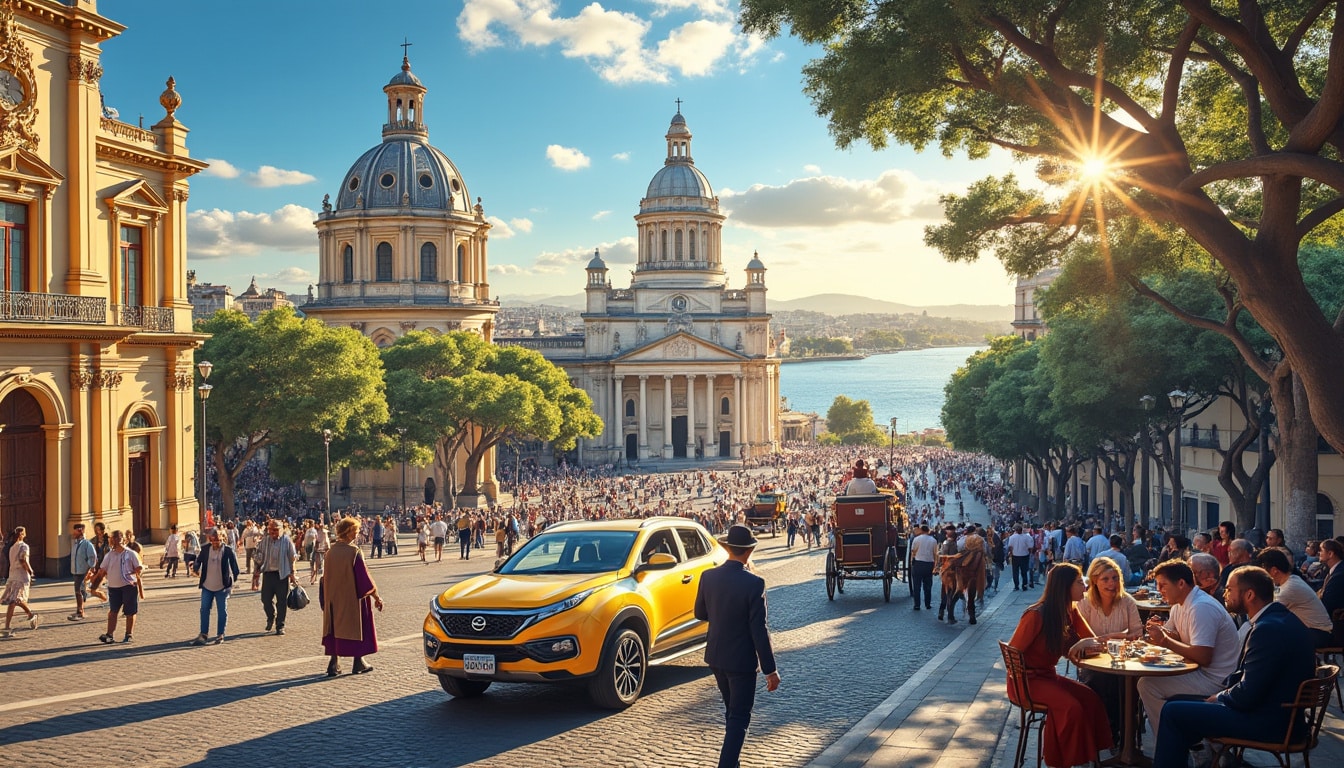Buenos Aires, often regarded as the “Paris of South America”, carries a rich tapestry of history woven through its vibrant streets and iconic landmarks. From its roots as a colonial outpost to its current status as a bustling metropolis, Buenos Aires embodies a unique blend of old-world charm and modern dynamism. The story of Buenos Aires is one marked by immigration, revolution, and cultural evolution, reflecting the diverse influences that have shaped its identity. Each corner of the city, from the tango-filled neighborhoods of San Telmo to the colorful Caminito street of La Boca, tells a tale of the past. Join us as we delve into the deep history of Buenos Aires and explore its many facets that make it an extraordinary city.
The Early Foundations of Buenos Aires
The initial settlement of what is now known as Buenos Aires was established by the Spanish explorer Pedro de Mendoza in 1536. The city was named Nuestra Señora Santa María del Buen Aire, a name that translates to “Our Lady St. Mary of the Good Air,” in reverence to the Virgin of Bonaria of Sardinia. However, this first establishment barely lasted a decade, falling victim to conflicts with indigenous groups such as the Querandíes and severe food shortages which forced the settlers to abandon the site.
Almost fifty years later, history witnessed the resilient colonial spirit with the second and more successful establishment of the city by Juan de Garay in 1580. This time, the foundations took root on the south bank of the majestic Río de la Plata. It was here that Buenos Aires began to evolve into a bustling port, critical to the Spanish Empire as a gateway for imports and exports across the Atlantic. The geographical advantage of Buenos Aires as a port city contributed immensely to its growth and laid the groundwork for its future as a cultural and economic hub.
By the late 18th century, changes were afoot with the Bourbon Reforms, which significantly impacted Buenos Aires by easing trade restrictions. This policy change attracted waves of European immigrants, predominantly Italians, British, and Germans, further enriching the city’s cultural tapestry. As such, Buenos Aires became a melting pot of diverse European influences, reflected in its architecture, culinary scene, and societal customs.
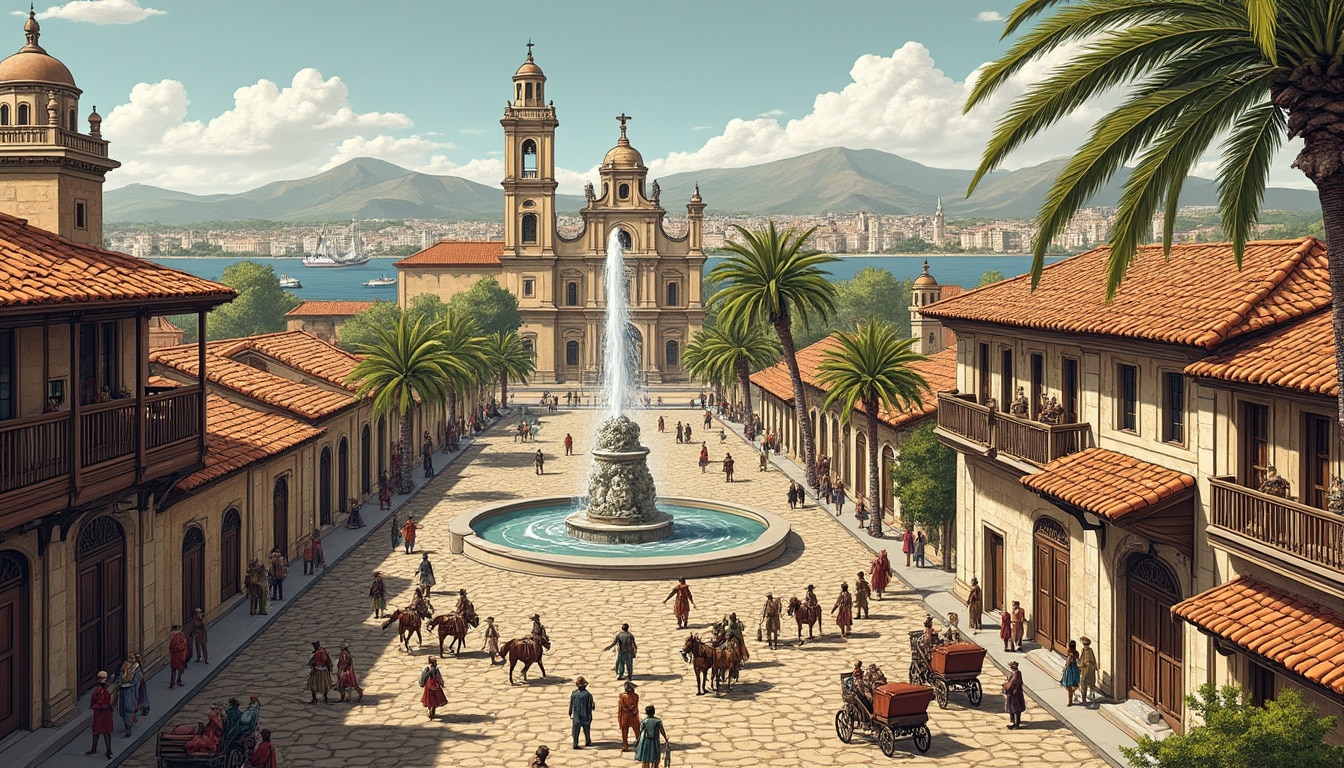
Significance of Indigenous Influence
Before the European settlers arrived, the lands surrounding Buenos Aires were inhabited by indigenous groups, namely the Querandíes and the Guaraníes. These indigenous societies held a deep connection with the land, depending on it for their sustenance and cultural expressions. Despite the disruptions caused by colonization, components of indigenous culture have endured, becoming integral to the local culture of Buenos Aires.
In modern Buenos Aires, the persistent influence of these early inhabitants is evident not only in cultural traditions but also in the nomenclature of many places and festivities. Efforts to preserve and celebrate this rich indigenous heritage continue today through various museums, festivals, and educational programs, ensuring that this aspect of Buenos Aires’s identity does not fade into obscurity.
| Year 📅 | Event 🌟 |
|---|---|
| 1536 | First founding by Pedro de Mendoza |
| 1580 | Re-establishment by Juan de Garay |
| 1750s-1800s | Increased European immigration |
Each of these historical milestones played a crucial role in shaping Buenos Aires’s pathway to becoming a vital international city as we know it today. Its early days of foundation and re-foundation truly set the stage for what was to follow — a rich tapestry woven from the threads of indigenous resilience, European ambition, and cultural integration.
Colonial Influences and Buenos Aires’s Growth
Buenos Aires’s growth during the colonial era is a testament to its strategic location and the adaptability of its people. The influence of sprawling trade and a burgeoning population during this period greatly shaped its urban development and cultural identity, aspects that can still be observed today.
During the colonial period, Buenos Aires functioned as a crucial trading post for the Spanish Empire. The city’s colonial architecture, with its Spanish and Italian styles, is a visual reminder of its past. Despite being remote from Lima, the administrative center of Spanish South America, Buenos Aires carved out a niche as a significant trade point due to its natural port. This economic role fostered a cityscape adorned with stately mansions and cobblestoned streets, many of which persist to this day.
The city’s vast cultural diversity was further enriched by the arrival of European settlers. With the Bourbon Reforms easing commercial constraints, Buenos Aires experienced a dynamic inflow of Italians, Germans, and British settlers who brought with them their culinary palates, architectural styles, and social customs. This influx of diversity gradually shaped the multicultural and cosmopolitan atmosphere that Buenos Aires is renowned for today.
Moreover, Buenos Aires’s social life has always been vibrant, further accentuated by communal gatherings, cafés, and the birth of tango. These cultural meeting points were crucial in knitting the societal tapestry, making Buenos Aires a hub of creativity and innovation. Population growth necessitated the expansion of neighborhoods like San Telmo, where culture and everyday life blend seamlessly, a setting that remains popular for both tourists and residents alike.
Cultural Narratives and Traditions
One cannot discuss Buenos Aires without mentioning the rich tapestry of stories that its inhabitants carry. The oral traditions, music, dance, and art forms that blossomed during the colonial period continue to thrive in today’s Buenos Aires. These narratives, often woven through folklore and tango, are emblematic of the city’s enduring spirit and creativity.
Buenos Aires is synonymous with tango, a dance and musical form that originated in the late 19th century in the city’s working-class neighborhoods. Tango became an emblem of Buenos Aires’s cultural identity, symbolizing the syncretism of European, African, and indigenous influences. As you wander through the historic streets of La Boca or catch a show at the famed Teatro Colón, the pulsating rhythm of tango offers a portal into the passionate core of Buenos Aires.
- ✨ The influence of European immigrants, especially evident in cuisine and festivals.
- 🎨 Rich art scene forged by cultural exchanges over centuries.
- 🎶 Tango as a defining cultural symbol, linking past and present.
These aspects of Buenos Aires’s colonial growth not only impacted its physical and urban landscape but also ingrained a rich cultural depth that brings history to life for both locals and visitors. This historical tapestry continues to evolve, contributing to the vibrancy and allure that Buenos Aires holds today.
Immigration Waves and Buenos Aires’s Economic Boom
Buenos Aires’s role as an attractive destination was solidified in the late 19th and early 20th centuries through significant waves of immigration that fueled its economic wings. This period laid the groundwork for Buenos Aires to emerge as a powerhouse of culture, industry, and innovation.
Post-independence from Spain, the city stood at the cusp of modernization, driven mostly by immigrants seeking new opportunities. This influx, predominantly from Italy, Spain, and other European nations, played a pivotal role in shaping the city’s identity and economic structure. Immigrants brought with them skills and crafts, invigorating the local economy and prompting an architectural boom evident in neighborhoods like Palermo and Recoleta.
The railroad expansion in particular catalyzed Buenos Aires’s economic development. Access to the fertile pampas allowed Argentina to become one of the world’s leading exporters of beef and grain, with Buenos Aires serving as the paramount shipping hub. The city’s ports bustled with activity and the economy thrived, bringing prosperity and transforming Buenos Aires into a cosmopolitan capital of South America.
This period also saw a transformation in the urban skyline, much of which remains stoically present to this day. Important infrastructure like the emblematic Teatro Colón was erected, enhancing Buenos Aires’s status as a cultural hub. Furthermore, the proliferation of institutions such as cafés, theatres, and social clubs became more ingrained in the city’s social fabric.
The Modern Cityscape: A Blend of Old and New
Buenos Aires today is an amalgam of its past, its rich migration stories layered within its neighborhoods and architecture. The grand French and Italian styles seen in Recoleta or Palermo mingle freely with more modernist influences, showcasing the city’s unique historical evolution. Despite the passage of time, Buenos Aires retains a warmth and vibrancy unmatched in many parts of the world.
Neighborhoods such as La Boca and San Telmo offer the most vivid displays of this cultural mingling, where history dances with contemporary life. Colorful streets like El Caminito not only preserve the artistic expressions of the past but stand as open galleries reflecting the artsy and avant-garde essence of the city.
| Neighborhood 🌆 | Highlight 🌟 |
|---|---|
| Palermo | Green parks and modern eateries |
| Recoleta | Elegant European architecture |
| La Boca | Colorful art and tango dances |
The vibrancy and eclectic nature of Buenos Aires continues to draw visitors worldwide, appealing to those keen to experience its heritage. This economic and cultural interweaving of history ensures that Buenos Aires remains relevant, a city perpetually attuned to the beat of its cosmopolitan heart.
The Political Landscape and Buenos Aires’s Resilience
The political history of Buenos Aires is as colorful and robust as its cultural narrative. Over its extensive history, Buenos Aires has been at the center of numerous political upheaval and transformation, reflecting the dynamic political climate of the country.
Post-independence, Buenos Aires was characterized by a volatile political climate, bearing witness to power struggles that have profoundly impacted its development. The centralization of power in Buenos Aires was often a point of contention with the provinces, leading to conflicts that ebbed and flowed over the years.
Perhaps one of the most defining moments of political resilience came in the early 19th century, when Buenos Aires repelled two British invasions, fostering a burgeoning sense of nationalism. These events, coupled with subsequent political developments, set a stage where Buenos Aires not only survived but thrived despite the challenges.
Throughout the 20th century, Buenos Aires became a nucleus for the sociopolitical debates that shaped modern Argentina, including those surrounding economic policy, social justice, and democracy. The world-famous Plaza de Mayo has been a constant stage for political expression and historic moments — an enduring symbol of Argentina’s fight for democracy and equality.
- 🗳️ Key political events have shaped Buenos Aires’s trajectory.
- 🚩 Plaza de Mayo as a symbol of protest and change.
- 👏 Resilient spirit of Buenos Aires despite political upheavals.
Endurance Through Political Turmoil
Argentina’s journey through multiple economic crises in the late 20th century painted a portrait of resilience in its capital city. Through periods of hyperinflation, military dictatorships, and economic reform, Buenos Aires emerged steadfast, a phoenix rising from the ashes of political and economic upheaval.
This endurance is embodied in the everyday life of its citizens who continue to embrace each phase of transformation. The city’s resilience is beautifully manifested in continued cultural celebrations, bustling markets, and vibrant street performances, a testament to Buenos Aires’s undying spirit.
The historical and political journey of Buenos Aires positions it as a pivotal heart of Argentina, capable of reflecting both the resilience and diversity of its people in the face of change. Buenos Aires stands as an enduring emblem of the human spirit, ever-evolving yet steadfast, showcasing how it has not only survived but thrived amidst challenges.
Cultural Festivals and Icons of Buenos Aires
The cultural scene in Buenos Aires is nothing short of a fiesta—a constant celebration of life, art, and history. The city’s calendars are filled with festivals and events that beautifully illustrate the rich tapestry of cultural narratives that have grown and evolved over centuries.
From the vivacious Carnaval Porteño, featuring extravagant parades and vibrant costumes, to the solemn observances of Semana Santa, each event offers a window into the traditions that citizens hold dear. Notably, the Buenos Aires Tango Festival draws enthusiasts and onlookers globally to celebrate this uniquely Argentine art form.
Adding to these grand celebrations, Buenos Aires boasts a myriad of landmarks that embody its diverse cultural heritage. The ornate Teatro Colón, renowned for its acoustics, represents a cultural centerpiece—hosting operas, concerts, and ballet performances that draw audiences from across the globe. Meanwhile, the Casa Rosada stands proudly as a symbol of Argentina’s political scene, its pink façade an iconic sight on Plaza de Mayo.
Icons of Architectural and Cultural Heritage
The city’s skyline is a mosaic of architectural splendor, from the modernism of high rises to the European elegance seen in neighborhoods like Recoleta. Its streets echo with creativity and resilience, capturing the heart of Buenos Aires. The historic city center, with its vibrant colors and life, offers a glimpse into the multifaceted soul of the city.
Walking through areas like Palermo and San Telmo, visitors find both relics of the city’s storied past and bastions of innovative contemporary culture. Street art and murals can be found throughout, turning the city into a sprawling gallery where history meets modern expression.
- 🏢 Stunning architectural diversity from La Boca to Palermo.
- 🎭 World-renowned cultural venues like Teatro Colón.
- 🎨 Vibrant street art found across neighborhoods.
The essence of Buenos Aires is its vibrant mix of tradition and trend, a city that celebrates its past while continually embracing the future. Its cultural and architectural icons play an integral role in keeping the city’s history alive, allowing Buenos Aires to remain a beacon of cultural heritage in the modern world.
Frequently Asked Questions
| FAQ 🤔 | Answer 💡 |
|---|---|
| What is the significance of La Boca? | La Boca is a vibrant neighborhood known for its artistic flair 🎨 and rich history, particularly its role in the development of tango 🎶. |
| How does Buenos Aires celebrate tango? | The city celebrates tango through numerous dance clubs and festivals, with the Buenos Aires Tango Festival being a highlight each year. |
| Why is the Casa Rosada important? | The Casa Rosada is Argentina’s presidential palace and an iconic symbol of its political history 🏰. |
| What cultural landmarks are a must-visit? | Key landmarks include Teatro Colón 🎭, Recoleta Cemetery, and the Obelisco, each offering a glimpse into the city’s rich history. |
| Are there historical tours in Buenos Aires? | Yes, numerous tours offer insights into Buenos Aires’s history, architecture 🏛️, and cultural traditions. |
Buenos Aires invites exploration, whether through its historic neighborhoods, lively cultural scene, or its timely festivals resonating through its streets. This city, continuously dancing between its rich past and vibrant present, remains a dazzling testament to resilience, diversity, and the universal love for tango. 🎶

Fun Facts & Curiosities About Buenos Aires
Buenos Aires, the heart and soul of Argentina, is not just a city, but an experience. Known for its vibrant culture, architectural marvels, and passionate tango, Buenos Aires offers surprising facts and curiosities that even frequent visitors may find fascinating.…
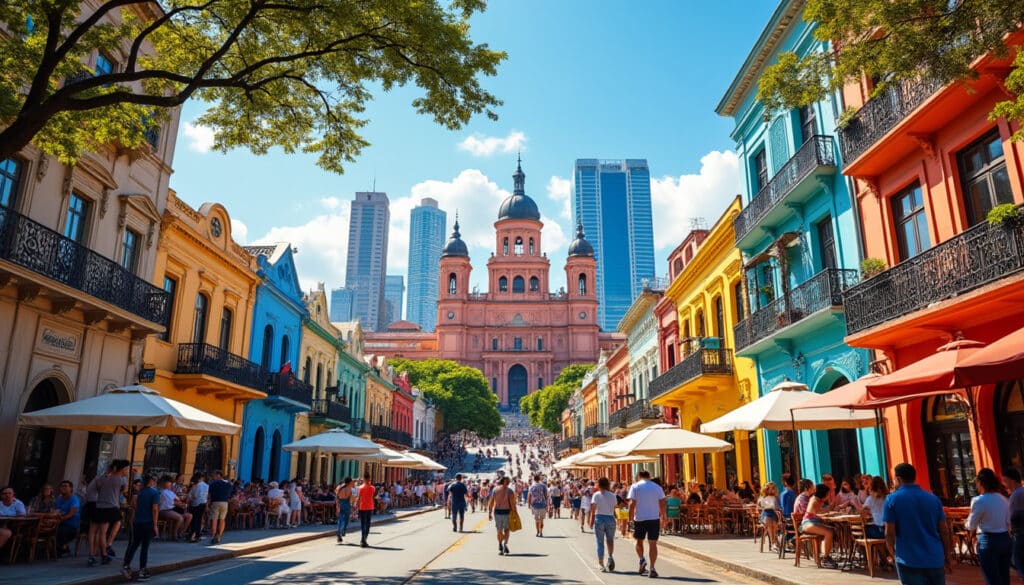
Architecture and urban features of Buenos Aires
Buenos Aires is renowned for its captivating architectural diversity, a melting pot of styles that reflect its rich cultural heritage. Known as both “The queen of the Río de la Plata” and “Latin America’s Paris,” the city’s landscape is a…
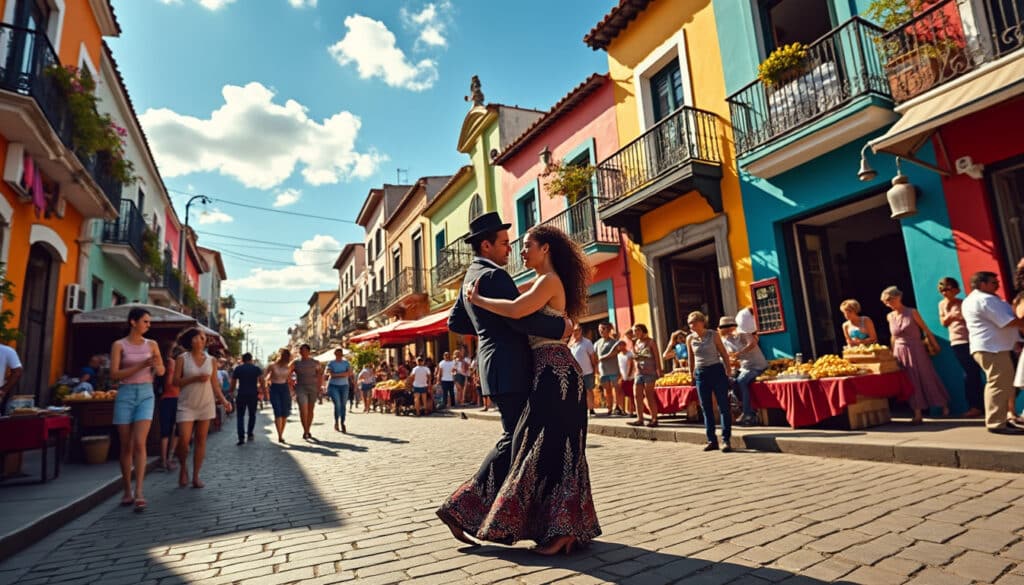
Basic facts about Buenos Aires
Buenos Aires, the vibrant capital of Argentina, is a city of inspiring contrasts and bustling energy. Famous for its rich cultural heritage and dynamic street life, it attracts travelers from all over the world. With its European flair and Latin…
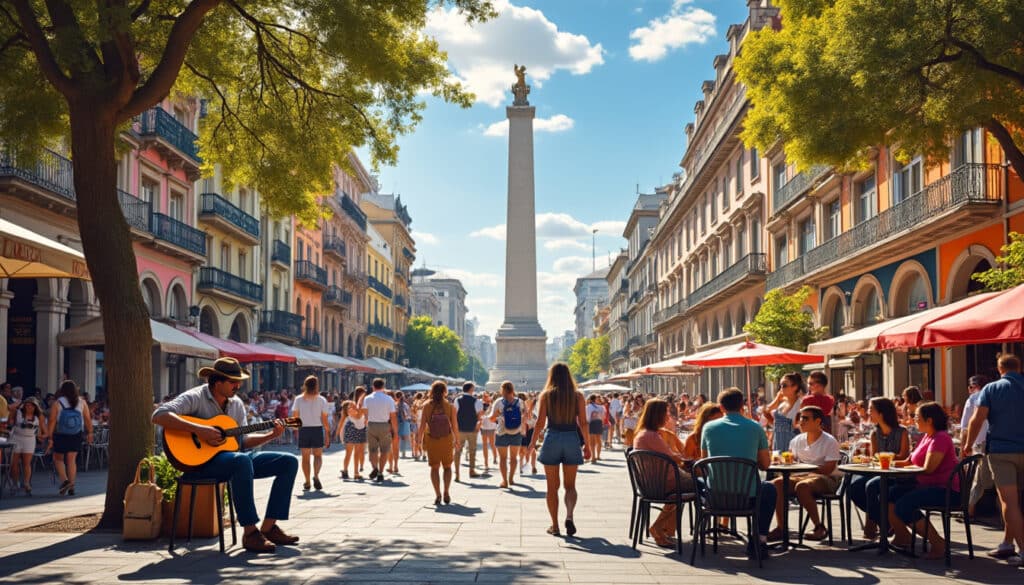
Often referred to as the “Paris of South America,” Buenos Aires blends European elegance with Latin American passion, creating a vibrant tapestry of culture and daily life that intrigues many. As the capital city of Argentina, it’s a place where…
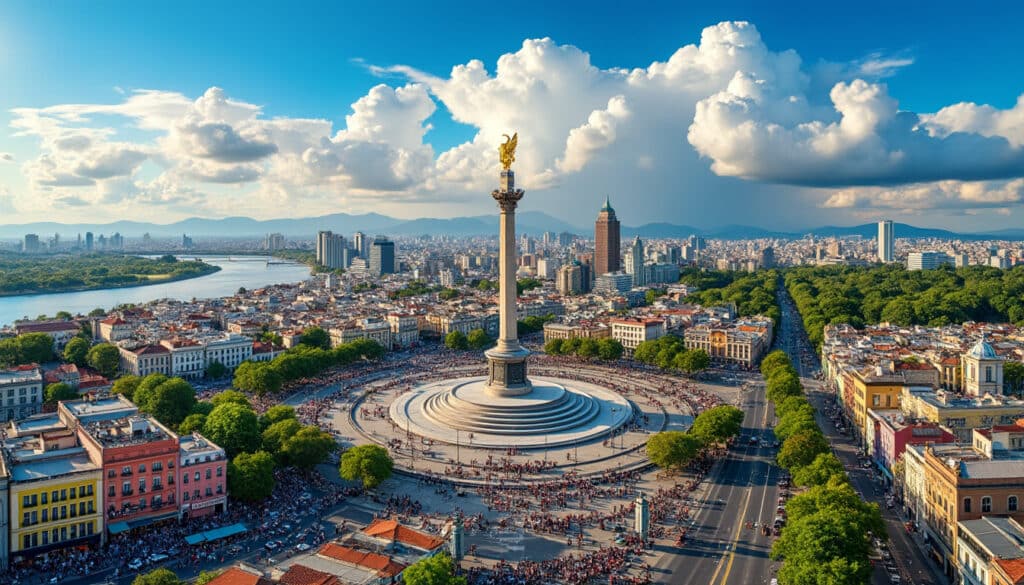
Demographics and geography of Buenos Aires
Buenos Aires, a city pulsating with energy, stands as one of the most influential urban landscapes in Latin America. Known for its captivating blend of European flair and Latin American warmth, Buenos Aires is rich in cultural diversity and historical…
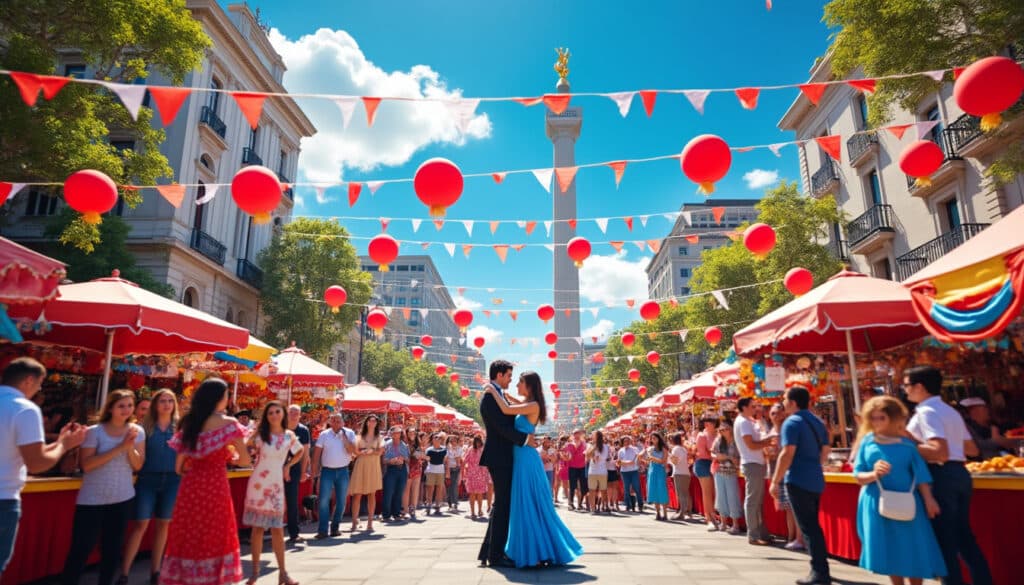
Holidays and celebrations in Buenos Aires
Buenos Aires, the enchanting capital of Argentina, is a city that thrives on celebrations, cultural diversity, and vibrant festivals. Its festive calendar is brimming with events that capture the essence of its rich history and multifaceted identity. From the iconic…

Language and spelling of Buenos Aires
Buenos Aires, often celebrated as the “Paris of South America,” stands as the vibrant capital of Argentina, rich in cultural diversity and linguistic variety. Known for its dynamic blend of European elegance and Latin American flair, Buenos Aires captivates millions…
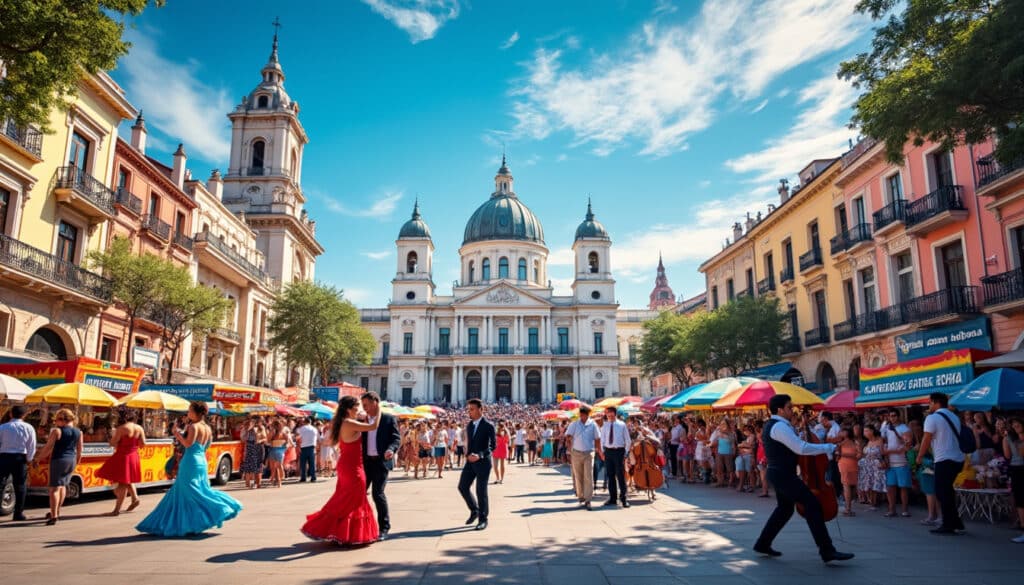
Local tips for tourists in Buenos Aires
Embark on an unforgettable journey through the vibrant streets of Buenos Aires, a city that seamlessly blends rich history with modern charm. For tourists visiting Buenos Aires, these insider tips will help you navigate the city’s hidden gems, culinary adventures,…
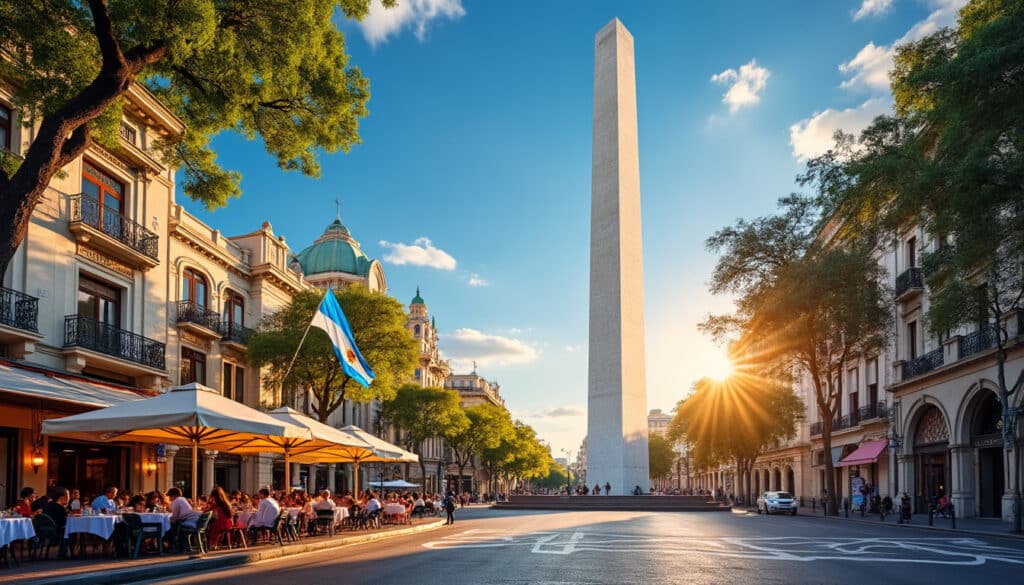
Names, flags, and identity of Buenos Aires
Buenos Aires, often dubbed the “Paris of the South,” is a city where history, culture, and identity intertwine in a dynamic tapestry. Beyond its vibrant streets, alive with the rhythm of tango and the aroma of mate, the identity of…
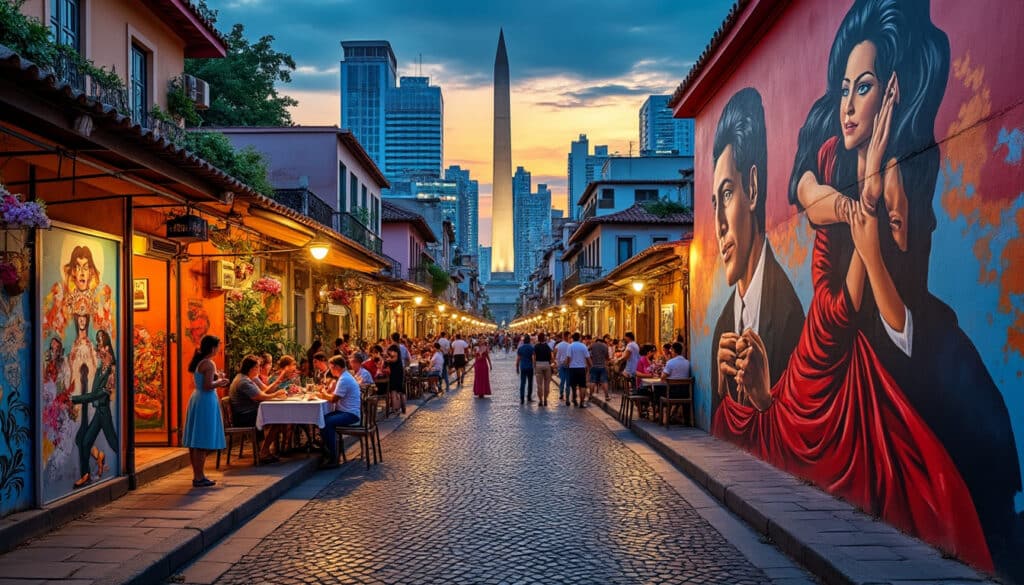
Reputation and identity of Buenos Aires
Buenos Aires, the capital of Argentina, stands as a testament to the rich history and cultural diversity that flow through its vibrant streets. Recognized for its European charm coupled with Latin American flair, the city offers a unique blend of…
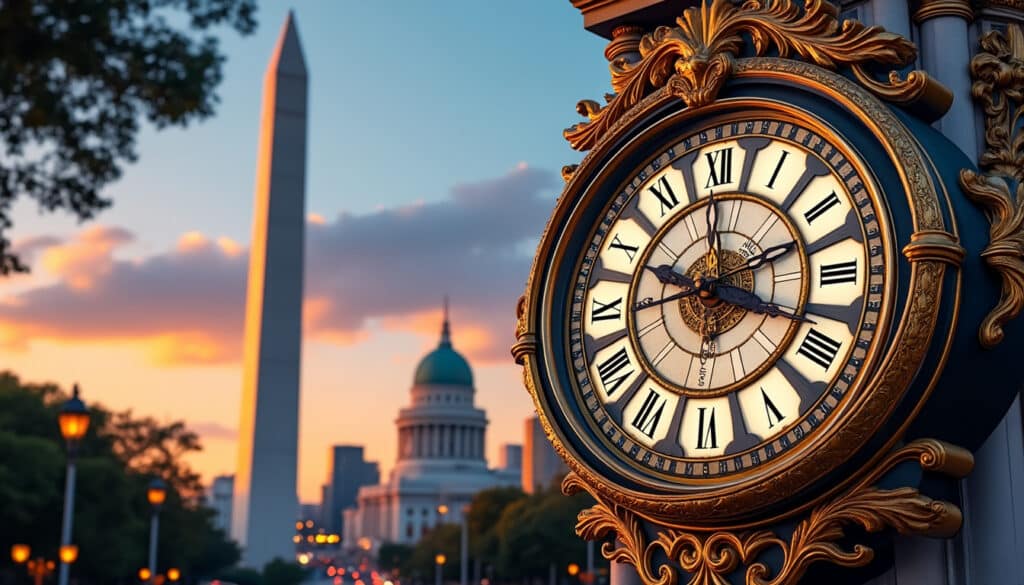
Time and time zone in Buenos Aires
Experience the vibrant ebb and flow of Buenos Aires, where time seems to waltz to the city’s unique rhythm. Understanding Buenos Aires Time is more than just setting your watch; it’s about immersing oneself into the heart of Argentina Time,…
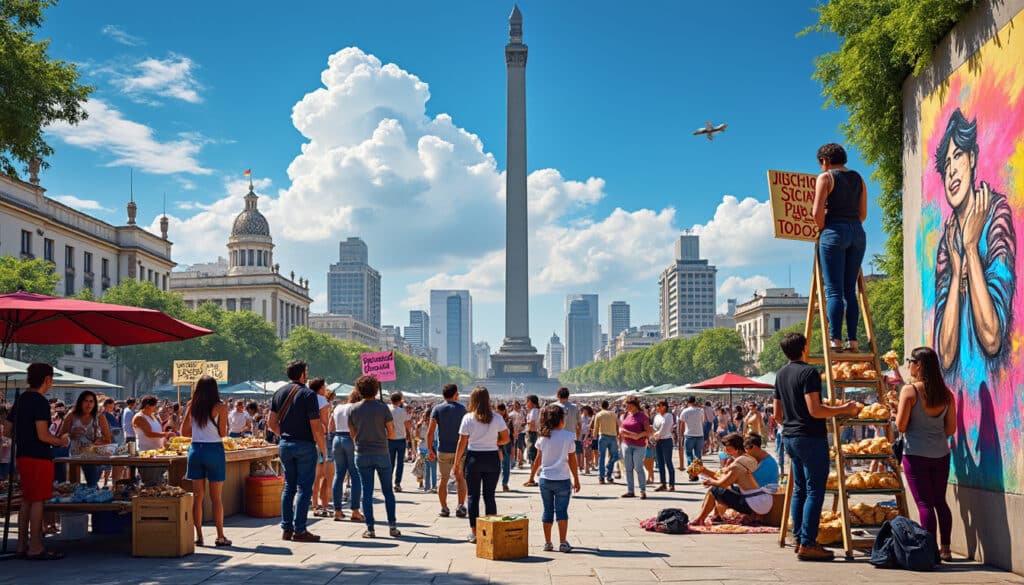
Unusual facts and social issues in Buenos Aires
Buenos Aires, with its captivating blend of old-world charm and dynamic modernity, captivates visitors and residents alike with many intriguing facets and pressing social issues. Behind the tango rhythms and lively street art lies a tapestry of unique cultural characteristics…
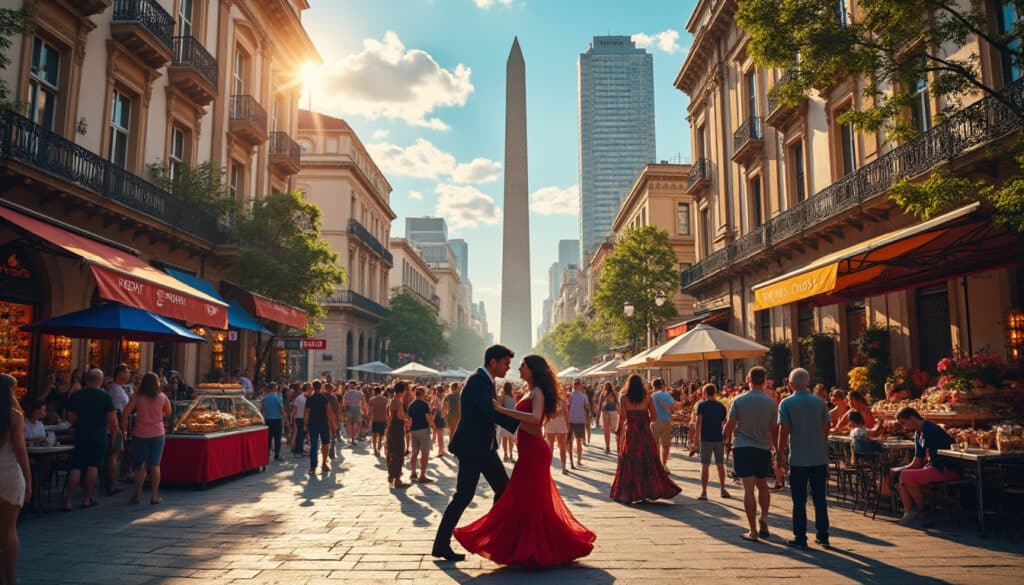
What does Buenos Aires look, smell, feel like?
Welcome to a city that dances even when you walk, a place where the rhythm never stops, and the sensation never fades. Buenos Aires, aptly known as the “Paris of South America,” invites you to explore its streets filled with…

